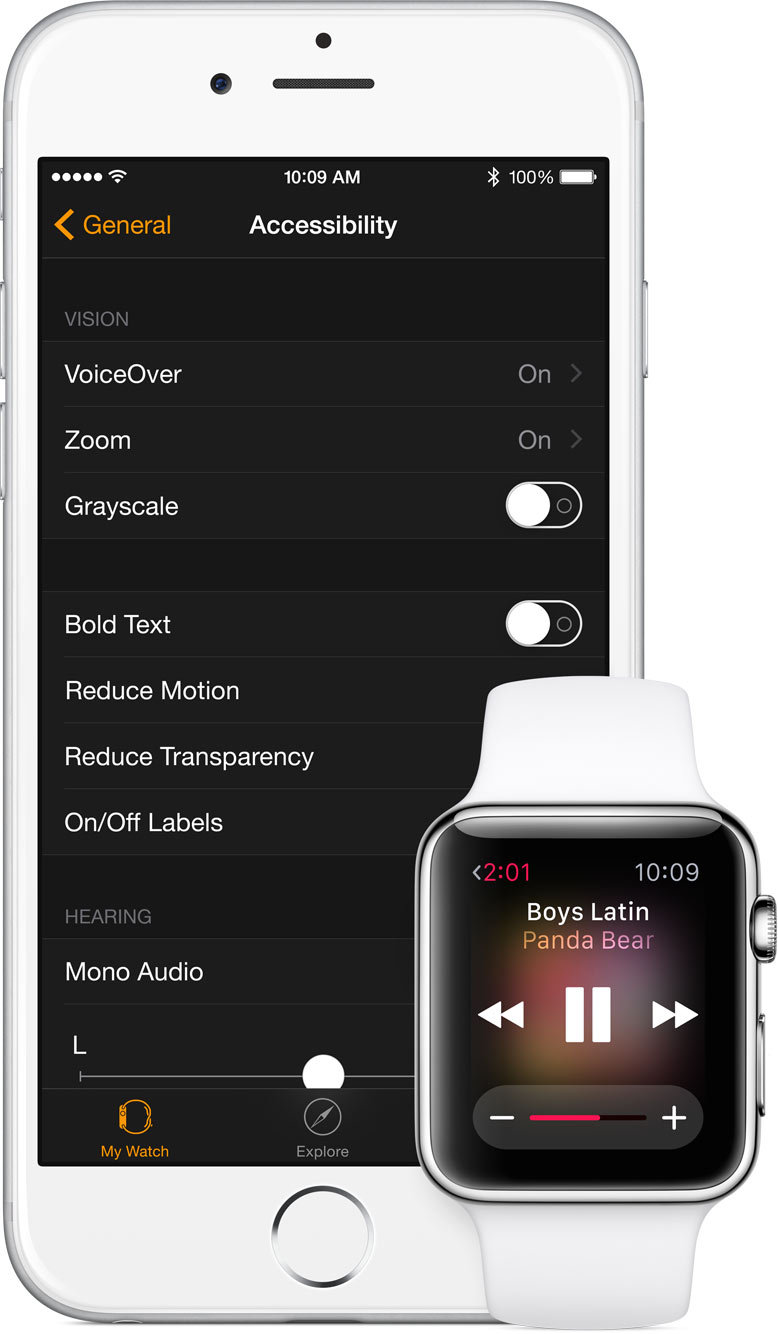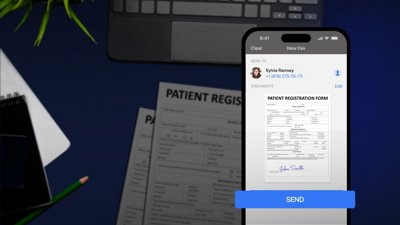Consumers with visual or aural impairments will have several options for making the Apple Watch more accessible to them, Apple revealed this week, including the company's oft-lauded VoiceOver functionality and user interface customizations.
Visually-impaired users will find VoiceOver — a screenreader built in to OS X and iOS for years — Â compatible with all built-in Apple Watch apps and available in 14 languages, according to Apple's Accessibility microsite. The Watch's default font size can also be increased, and a special extra-large watch face is included.
Other existing iOS and OS X accessibility features like interface zoom, grayscale mode, and switch labels as well as the options to reduce transparency and motion have also made their way into the Watch.
For those with impaired hearing, the Watch an be set to use mono audio, sending both audio channels to a single ear to help alleviate missed music or notification sounds for users who are deaf or hard of hearing in one ear.
Additionally, the Watch's Taptic Engine can be configured with a special "Prominent Haptic" setting that pre-announces common alerts.
Apple has long been praised by rights groups for its accessibility practices, and iOS devices are often described by visually- and hearing-impaired people as having brought dramatic improvements to their quality of life. Last year, deaf travel writer Cherie King was featured in an iPad advertisement detailing the tablet's ability to help her travel independently and communicate around the world.
"My iPad lets me share my journey with the world," King is quoted as saying. "Other deaf people tell me they're traveling more now because they see it's possible."
 AppleInsider Staff
AppleInsider Staff








 Wesley Hilliard
Wesley Hilliard

 Oliver Haslam
Oliver Haslam
 Christine McKee
Christine McKee
 Amber Neely
Amber Neely
 Andrew Orr
Andrew Orr

 Sponsored Content
Sponsored Content








12 Comments
This just excellent. Yet another reason the Johnny come latelies will not succeed
I was wondering just how accessibility would be carried over into the Watch OS. I am impressed as to how complete the carryover has been from iOS. My congratulations and appreciation to the Apple software engineers involved.
This is Apple at its best. They do accessibility not because it makes them a ton of money, but because it's just the right thing to do.
It's also worth noting that Apple makes accessibility drop-dead simple for developers. If you use the native iOS/OS X controls and generally follow Apple's recommendations, your apps will be pretty accessible without even thinking about it. I used to work on a lot of desktop Windows apps, and accessibility was only an afterthought to Microsoft. It was such a pain to do that no one did it.
Accessibility is all about making data accessible to anyone, not just the disabled but also to the abled. The problem is that Apple Watch offers no "keyboard" or anything to type in. How will the deaf text back if he gets it on Watch if he only signs?
A good point about the easy accessibility development on Apple devices.
Also, no doubt some of the accessibility work is still done by iOS, and then transmitted back to Watch OS. I don't know the details.